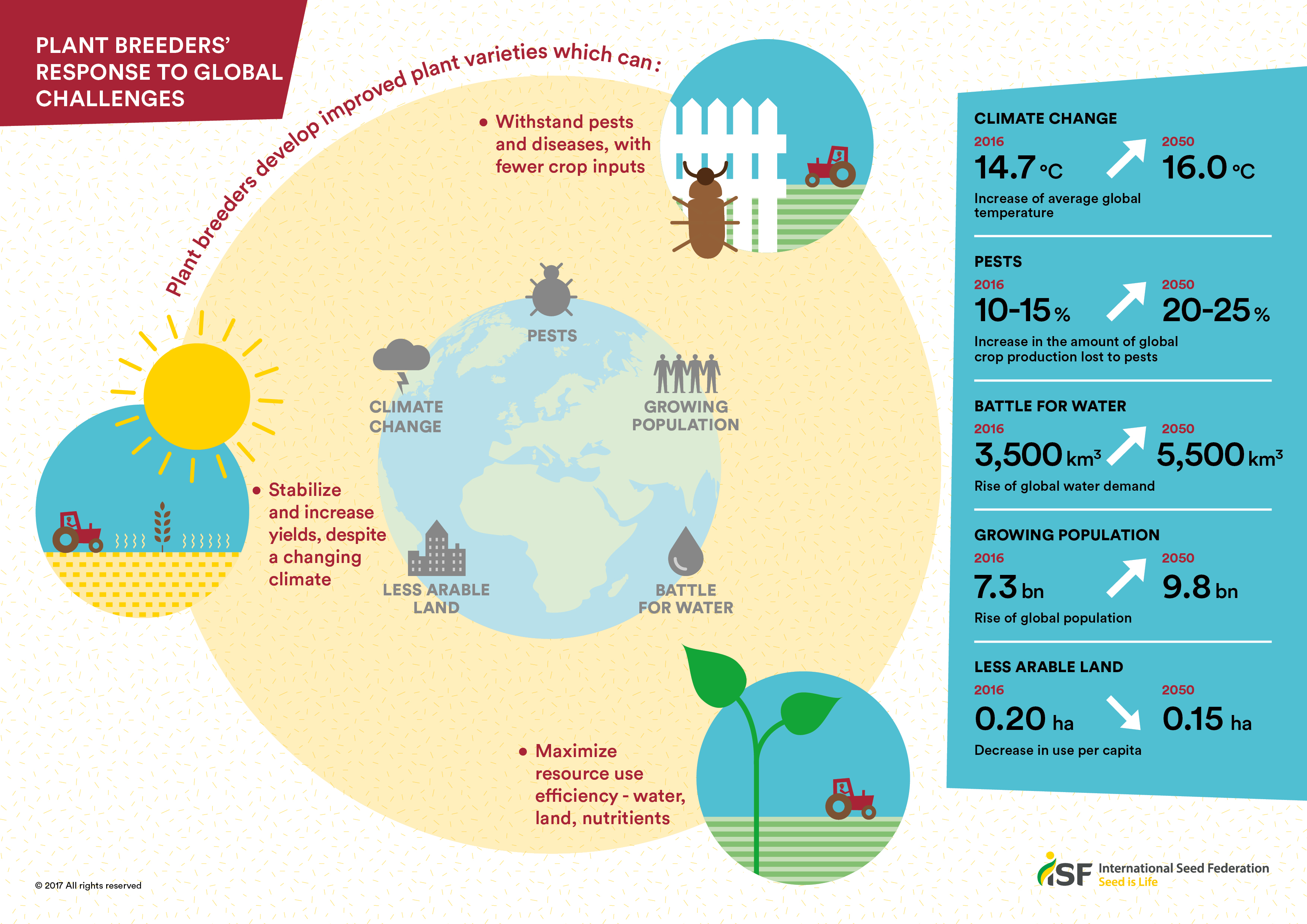American Seed Trade Association
SEED: A Sustainability Solution
There’s no question that today’s food and agriculture system faces unprecedented challenges, from climate change to a growing population, and rapidly evolving pests and diseases. Continued innovation in plant breeding and seed variety development are crucial to ensuring long-term economic, social and environmental sustainability. The seed industry is founded on innovation, and innovation is a part of everything we do – from plant breeding and seed treatments, to soil health and habitat restoration. Better seed means better life, for everyone.
BREEDING FOR BETTER CROPS, USING FEWER RESOURCES: Plant breeders have been improving seeds for thousands of years. Thanks to our growing scientific understanding of plant sciences, breeders today can develop better seeds with greater efficiency and precision than ever before. This means more resilient crops that can thrive despite pressures from drought, flooding, extreme temperatures, and evolving insects and diseases. Better seed allows farmers to grow more, using less land and fewer resources; and in turn, provides consumers with access to wider varieties of safe, affordable and nutritious foods. Additionally, evolving innovations in breeding hold tremendous promise for unlocking solutions to some of our most pressing global challenges, from climate change mitigation to food security.

SEEDING SOLUTIONS THROUGH PLANT BREEDING INNOVATION
Did You Know?
- Researchers are using cutting-edge plant breeding methods to develop new water- efficient varieties of crops, including some of our favorite fruits and vegetables. With 70% of the world’s freshwater used for agriculture, reducing the amount of water needed to grow food could have a significant environmental impact.
- Plant breeding innovation can enable crop plants to grow stronger, deeper roots that can capture carbon and keep it sequestered in the soil for longer periods of time, instead of releasing it into the atmosphere when crops are harvested. These plants could reduce up to 46% of the excess carbon emitted annually worldwide if they became a fixture in the agricultural food chain.
- Innovations like gene editing could dramatically cut down on food waste— by making fruits and vegetables—like avocados and potatoes--resistant to cosmetic blemishes like browning and bruising. Food waste is responsible for an estimated 8% of all greenhouse gas emissions, including methane, according to an analysis by the United Nations Food and Agriculture Organization.
LEARN MORE AT: innovature.com

ASTA IS A PROUD MEMBER OF THE FOOD AND AGRICULTURE CLIMATE ALLIANCE (FACA)
Comprised of organizations representing farmers, ranchers, forest owners, agribusinesses, manufacturers, the food and innovation sector, state governments, sportsmen and environmental advocates, FACA works to define and promote shared climate policy priorities. The alliance is united around three core values:
- agricultural and forestry climate policies must be built upon voluntary, incentive- based programs and market-driven opportunities;
- they must promote resilience and adaptation in rural communities; and
- they must be science-based.
LEARN MORE AT: AgClimateAlliance.com
INCREASING RESILIENCY THROUGH SEED TREATMENTS:
Seed treatments help protect the developing seed during its most vulnerable time – at planting and germination. The treatments highly targeted, precise approach means less impact on the surrounding environment. This is one of the many valuable and innovative tools that enable America’s farmers to be more productive, while using less – that’s a win for farmer’s bottom line and a win for the environment.
Continued innovations in seed treatments will allow farmers to meet new and emerging challenges while realizing healthy yields – all while protecting our land and natural resources for the future.
LEARN MORE AT: seed-treatment-guide.com
CONSERVING & RESTORING THE LAND, THROUGH SEED:
The seed industry plays an important role in providing quality seed for land restoration, rehabilitation, reclamation and conservation. Environmental and conservation seed helps to restore lands devastated by wildfires, natural disasters, and invasive weeds. It serves as the foundation of healthy landscapes, contributing
to stable ecosystems and economies, while providing critical erosion-control and biodiversity benefits. Better cover crop seed helps farmers not only achieve their conservation goals, but also their business goals, by contributing to soil health and carbon sequestration, while conserving resources and boosting productivity.
FOR MORE INFORMATION, CONTACT:
Janae Brady – Senior Director Government Affairs jbrady@betterseed.org
Payton Englert – Director Government Affairs penglert@betterseed.org
Pat Miller – Director State Government Affairs pmiller@betterseed.org


